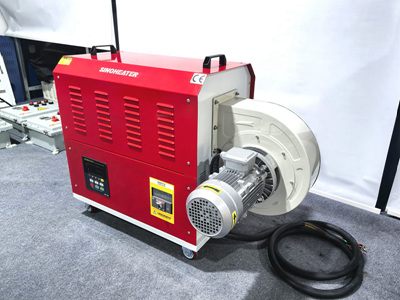Maximizing Value: How to Select a Cost-Effective Portable Heater Within Your Budget
Choosing a portable heater that balances performance and affordability requires strategic evaluation of features, durability, and long-term costs. Without focusing on specific brands or prices, this guide explores actionable steps to identify high-value options aligned with financial constraints.
Defining Your Heating Needs and Budget Boundaries
Assessing Room Size and Usage Frequency
Start by calculating the square footage of the space requiring heating. Smaller rooms may need lower-wattage models, while larger areas demand higher-capacity units. Consider how often the heater will run: daily use in cold climates justifies investing in energy-efficient technologies, whereas occasional use in milder regions allows for simpler, budget-friendly designs.
Prioritizing Essential Features Over Extras
Identify non-negotiable functions, such as adjustable thermostats or tip-over safety switches, which enhance usability and safety. Avoid paying for unnecessary add-ons like Bluetooth connectivity or decorative finishes if they don’t align with your needs. For example, a basic model with reliable heat output and automatic shutoff may offer better value than a feature-rich alternative with unreliable performance.
Setting Realistic Expectations for Longevity
A cheaper heater with a shorter lifespan might cost more over time due to replacements or repairs. Research average durability by reading user reviews about component reliability, such as heating elements or fan motors. Opt for models with replaceable parts or modular designs, as these can extend usability without requiring a full replacement.
Comparing Energy Efficiency and Operational Costs
Understanding Energy Consumption Metrics
Look for heaters with high energy efficiency ratings, often indicated by certifications or labels specific to your region. Models that convert most electricity into heat rather than wasting it on noise or excess airflow reduce monthly utility bills. For instance, ceramic or infrared heaters typically outperform traditional coil-based models in energy retention.
Evaluating Smart Features for Cost Savings
Some heaters include programmable timers or eco modes that adjust output based on room temperature or occupancy. These features prevent overheating and unnecessary energy use, particularly in spaces used intermittently. While advanced controls may slightly increase upfront costs, they often pay off through lower operational expenses over the heater’s lifespan.
Balancing Wattage and Heating Capacity
Higher-wattage heaters generate more heat but consume more power. Match the unit’s capacity to your room size to avoid inefficiency. A heater that’s too powerful for a small space will cycle on and off frequently, increasing wear and energy waste. Conversely, an underpowered model will struggle to maintain warmth, leading to prolonged operation and higher costs.
Researching User Feedback and Reliability
Analyzing Long-Term Performance Reviews
Customer testimonials provide insights into real-world durability and performance. Focus on comments about consistent heat output, noise levels, and ease of maintenance. Recurring issues, such as motor failures or inaccurate thermostats, indicate potential reliability problems that could offset initial savings.
Identifying Common Design Flaws
Some budget heaters compromise on materials or construction quality to reduce costs. For example, flimsy plastic casings may crack over time, while cheap heating elements can degrade quickly. Prioritize models with robust build quality, even if they cost slightly more, as they’re less likely to require repairs or replacements.
Checking Warranty and Customer Support
A solid warranty reflects manufacturer confidence in product quality. Look for coverage spanning at least one to two years, including parts and labor. Additionally, responsive customer service can resolve issues quickly, minimizing downtime and additional expenses. Avoid brands with limited support networks or vague warranty terms.
Exploring Alternative Purchasing Channels
Leveraging Seasonal Sales and Promotions
Retailers often discount heaters during off-peak seasons, such as late spring or early fall. Timing your purchase to coincide with these periods can yield significant savings without sacrificing quality. Sign up for newsletters or follow retailers on social media to stay informed about upcoming deals.
Considering Refurbished or Open-Box Options
Certified refurbished heaters, inspected and repaired by professionals, can offer substantial discounts compared to new models. Ensure the seller provides a warranty and detailed condition reports to avoid hidden defects. Open-box items, returned unused by customers, are another cost-effective choice with minimal risk.
Comparing Online and In-Store Pricing
Online retailers frequently offer competitive prices due to lower overhead costs, but in-store purchases allow you to test noise levels and build quality firsthand. Use price-comparison tools to evaluate options across platforms, and factor in shipping costs or in-store pickup fees when calculating total expenses.
By aligning your budget with heating requirements, prioritizing energy efficiency, and researching reliability, you can identify a portable heater that delivers lasting value. Thoughtful consideration of these factors ensures warmth and comfort without compromising financial stability.



